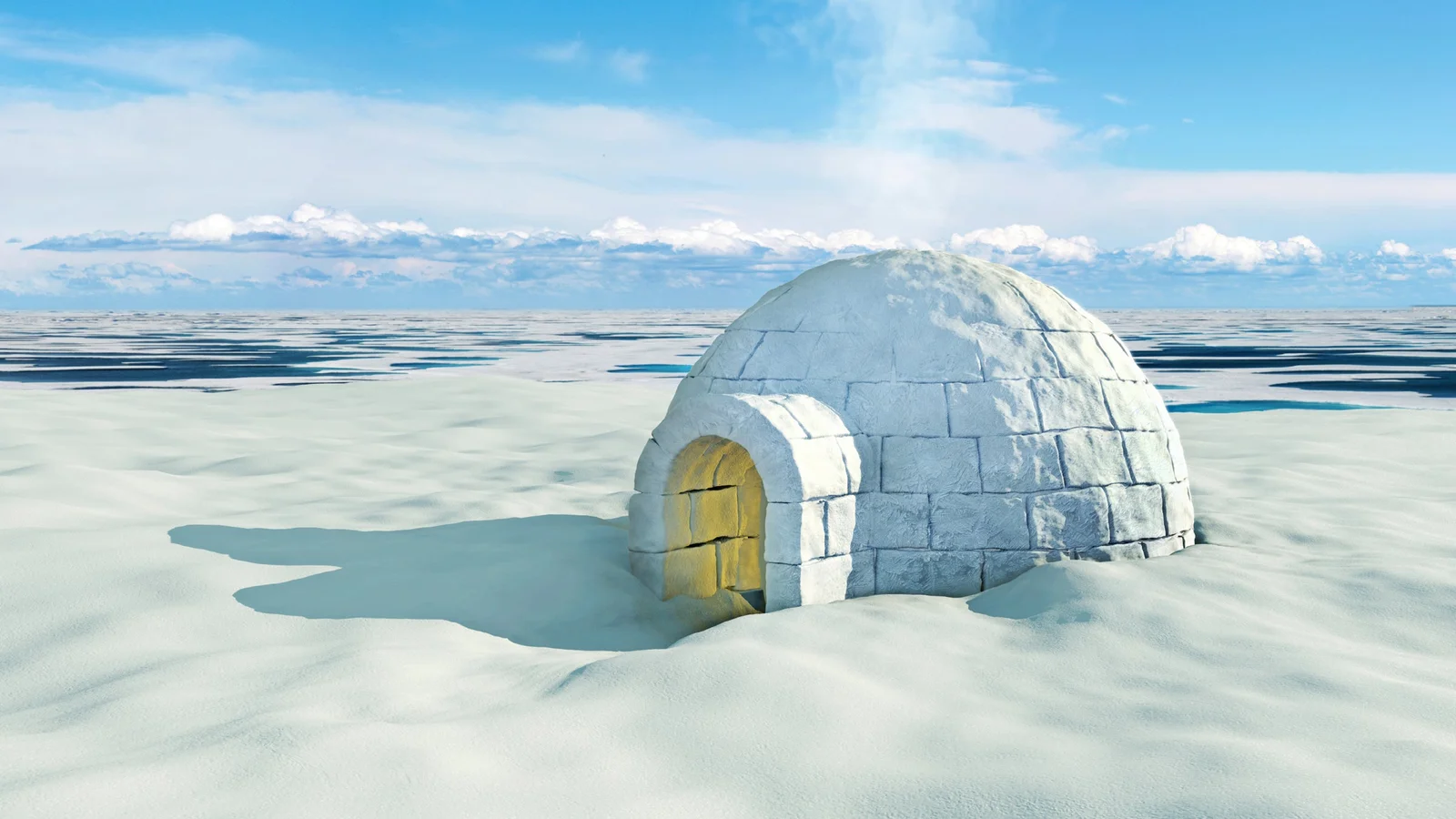You all must have heard about Igloo, a snow house.
Igloo is also spelled as iglu or aputiak, which means temporary winter home or hunting-ground dwelling of Canadian and Greenland Inuit. The term igloo, from Eskimo igdlu or house, is related to Iglulik, a town, and Iglulirmiut, Inuit people, both on an island of the same name.
Igloos are synonyms for the Inuit people of Canada’s Arctic.
The interior temperature of an igloo is warmer than the outside temperature i.e, 20 to 70 degrees, in places where temperatures can be as low as -50 degrees.

Who lives in igloos?
The Inuit, who are known as Eskimos to many, invented the igloo many centuries ago. The igloo was meant to survive brutal winters for hunters in a vast area that spans more than 3,500 miles. An igloo is lit by a fire in the frigid wilderness.
The word “Inuit” means “the people.” “Eskimo” is supposed to mean “eaters of raw meat” and is considered an offensive term because the name was given to the Inuit by non-Inuits. As per some linguists, “Eskimo” means “to net snowshoes,”. Many people use the terms interchangeably or think they are distinct tribes.
The great topographical reach of the Inuit makes them the broadest native gathering on the planet. They are seemingly additionally one of the hardest, having endured perhaps the most upsetting environments on the planet for thousands of years. Inuit adjusted sometime in the past to the cruel Arctic conditions.
Since the beginning of time, the Inuit depended substantially more vigorously than the other worlds on creatures for sustenance, to a great extent since plants can’t develop where they reside. Due to them to a great extent flesh-eating slims down, Inuit intuit headed out from their homes to a lot colder regions close to the ocean ice, where they could chase seals.
Features of Igloos
Igloos are a little, vault-formed design constructed totally out of squares of ice. An igloo can go from as little as a one-individual hunting safe house to huge, stylized constructions joined to more modest igloos. Most igloos are self-supporting because of the strength of the ice, however, while spring hits, the sun and hotter temperatures go igloos to slush.
A very much developed igloo can warm an igloo up to 40 degrees over the external temperature. Its highlights include:
The walls block the breeze, which can cause frosty temperatures to feel numerous degrees colder.
Snow and ice fill in as covers to trap body heat inside the igloo so the tenants of an igloo have a twofold heater.
Protection abilities really increment a couple of days after development. Body hotness and sun openness cause the igloo to soften somewhat.
Do igloos melt?
The igloo, a temporary winter hunting shelter for the Alaskan Eskimo does melt inside, but not to a great extent. The snowflakes falling outside of the igloo, in the harsh Alaskan winter, quickly melt when they land on its roof, and provide a replacement layer of insulation for the igloo.









